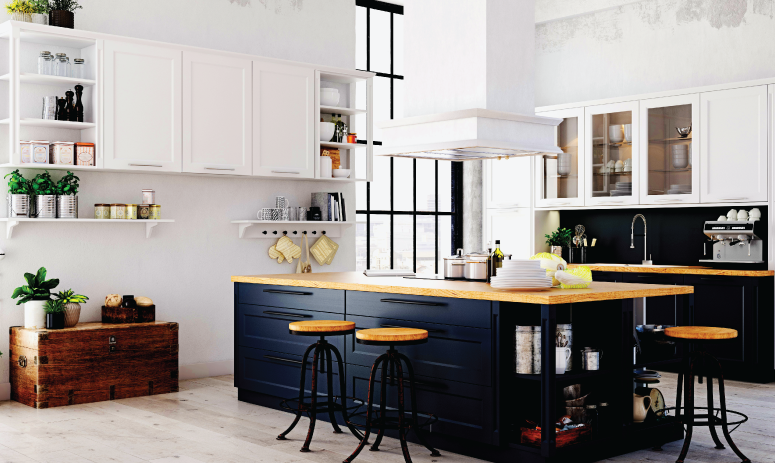Top 9 Tips To Have A Greener Kitchen

An eco-friendly household begins with the kitchen and the way we enjoy our food, but that’s not all. It is important that we take in consideration of preparing food as efficiently as possible with as little energy as we can, the way to clean our households and the kind of products we use and usage of equipment made from environmental friendly and sustainable materials. These choices form a large impact on our health and the environment around us. Here are some of our suggestions to prepare meals in an efficient and environmentally friendly manner to turn you and your kitchen greener!

Save your cash and love your utensils
Make sure to invest in some good kitchen utensils and cookwares. While there have been debates going around on the usage of non-stick pots and pans, it is without a doubt that it has its limits on its usefulness. Perhaps you could opt to go for stainless steels or cast iron equipment instead. A good cast iron skillet will be able to last for a long time. The same applies to choosing sturdy utensils instead of cheap utensils. As such, low quality wooden spatulas may rot and plastics will melt if placed too long under high temperature over pots and pans. Purchase knives that you can sharpen by hand and obtain high quality cloth instead of large amounts of kitchen paper towels.
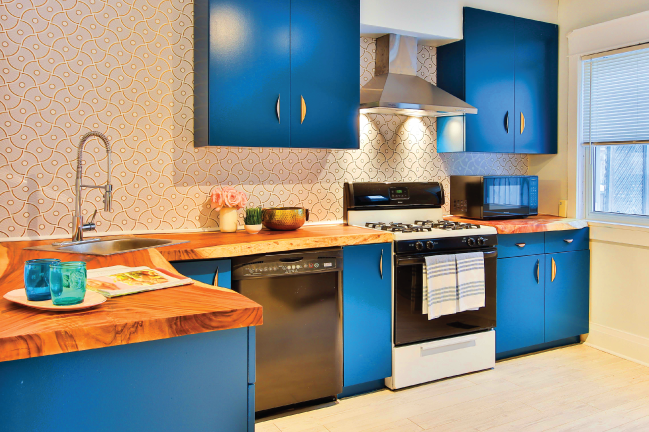
Gas stove vs Electric stove
It could be difficult to make a decision between the options of a gas or an electrical stove. In the eyes of a cook, many prefer gas as it is much easier to control temperatures and it offers instant-on heat. In addition, it does not waste too much heat when the cooking is completed. If you are a gas user shopping for a brand new stove, a low BTU output stove will be more energy efficient. On the other hand with the usage of electricity, the most efficient stoves are the ones that make use of induction elements. It transfers electromagnetic energy directly from the stove to the pan leaving the cook-top cool down itself and uses less than half of the energy of standard coil elements. However, the downside to induction uses is that cook-tops require the use of metal cookwares such as stainless steels, cast iron or enameled iron while aluminium and glass pots won’t be able to function on the stove. The same applied to units with ceramic-glass surfaces as it uses halogen elements as its heat sourcer. This makes it the next best alternative from the idea of efficiency. These materials deliver heat almost instantly and respond fast to changes in its temperatures, plus, they are easy to clean as well. However, they are only able to work efficiently when the contact between your pan and the glass surface is good. Energy will be wasted if the pans are rounded at the bottom. It is suggested that you should look for the most efficient model available and buy green power to generate clean, renewable energy. In addition, electric stoves are much more beneficial than gas stoves which will contribute 25 to 39 percent more CO2 and NO2 to the surrounding air within your house. The stove of your choice will mostly depend on your lifestyle and one's budget. Therefore, the best possible choice for you is to select the stove of your choice to ensure that it will be able to last at least a decade, therefore saving on the materials and resources used from the manufacturers.

Appliances, appliances!
Energy efficient based upgrades are growing fast amongst many appliances. As such that a dishwasher of quality is able to use a much lesser amount of water in comparison to washing dishes by hand. However, make sure to check that a repair isn’t required at the moment before making any hasty purchases of your products. Should you wish to rid off any old appliances, do check around your community for the correct way to dispose of old appliances as many of them have take-back programs. This is to reduce the risk of discarding hazardous materials or chemicals inappropriately and cause potential harm to the environment and the people around. When looking to purchase a new product, do keep an eye out for the Energy Star rating which can be found on many kitchen appliances such as stoves, refrigerators, freezers and dishwashers. It is important to choose a sturdy and long lasting model with a simple, sleek design. For example, if you are purchasing a new refrigerator, think small. Many foods would last long even if it was not placed in the fridge. Such as fruits, they rot faster in the refrigerator due to the ethylene gas released and trapped in the fridge while the fruit ripens. Purchasing a smaller refrigerator and placing less in it helps to save you a lot of energy and electrical bills.
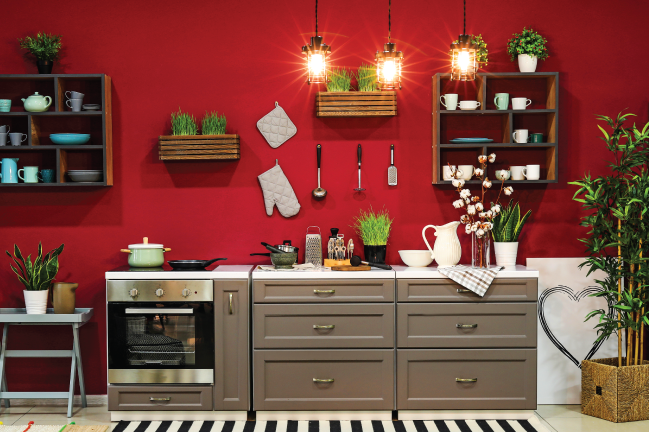
Cook ‘em efficiently
It is natural for everyone to preheat their oven before the use of it. Many ovens from the latest models are able to achieve the temperature of the user’s choice so fast, that preheating is almost unnecessary. When it comes to roasting or baking foods that are flexible when it applies to cooking time, they can almost be placed into the oven immediately and allow the dishes to cook by themselves in the residual heat by turning off the oven a little earlier. One of the ways to make use of the oven as much as possible is by cooking more than a dish at once. As such for small dishes, making use of a toaster oven or reheating a microwave will save you a lot of energy. The Energy Star estimates that cooking energy can be reduced up to 8- percent when it comes to the use of a microwave instead of an oven. When you are cooking on the stove, do ensure that you use a pot fitted for the amount of food you are cooking for as it makes a large difference on the stove burner or electric stove. It has been proven that the use of a 6 inch pot on an 8 inch burner wastes more than 40 percent of the burner’s heat. In addition, do ensure that the kitchen pots and pans you have, have close fitting lids and use them as much as possible as it reduces the amount of time taken to cook your food and keeps heat circulated in the pots and pans. Pressure cookers are suggested to be used as well as they save a tremendous amount of energy and reduce cooking time up to 70 percent.

Support locally
The food you purchase is as important as the kitchen utensils you have at home, so do try to purchase locally. Food miles has been one of the recent considerations of eco-friendly foods with the fewer the number of miles from the farm to table, the better. As organic food is bereft of preservatives and biocides, they spoil much more quickly, therefore having your organic food flown in from overseas is unfavorable as the longer they are in the transit, the less pristine its condition will be. If possible, it is recommended that you support a community supporting agriculture (CSA) by purchasing from local farmer markets or purchasing from the farmers directly.
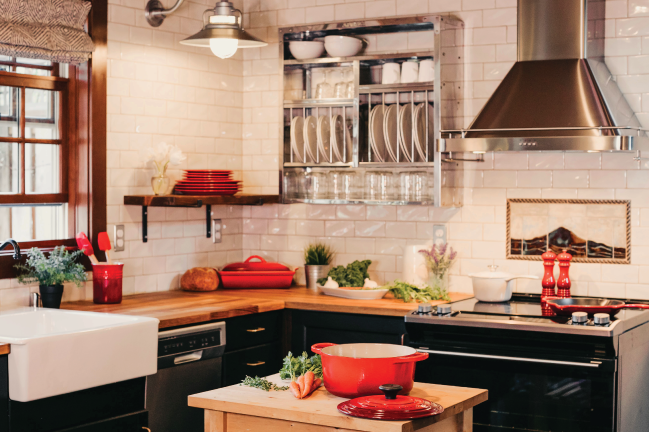
Purchase, cook and produce in bulk
Do purchase your items in bulk! Just keep in check that you are able to consume the items you bought and produce. Purchasing your items in bulk reduces the amount of packaging needed and trips made to the store. As such, you may purchase towels in bulk which are intended to be used for cleaning cars and use them in the kitchen. They are much cheaper than many kitchen towers and less disposable as well. Bulk is suggested as well as it is an efficient use of energy of your appliances as well your time. Cooking up a large pot of soup to feed yourself and save lots of leftovers. This helps you to plan your meals as well and it is a wonderful way to shop efficiently and free up some time for leisure.
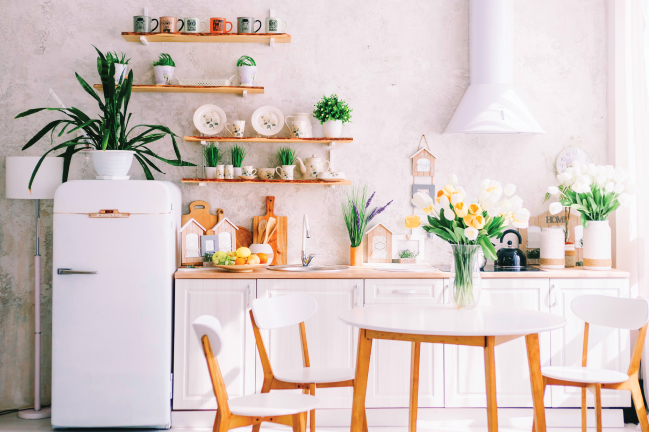
Too much waste? Here’s how to reduce ‘em!
The kitchen produces one of the most waste in your household. One of the ways to reduce these wastes is to bring your own bag to shop for your items instead of using the shopping plastic bags provided by the supermarket when you shop for your items. Another way is to avoid oversized portion foods being produced. This is usually caused by purchasing too much food and cooking too much, eventually throwing them away. It is important to reuse items in your household such as glass jars and grocery bags or packagings you cannot avoid. The last but not least is to compost any organic waste such as cardboard and paper. You could also give your compost to local farmer markets in your city and they are usually more than happy to accept them! Remember to recycle any other leftovers before throwing them into the trash.

Cleaning products
There are many options available for a more eco-friendly, non-toxic, biodegradable and even plant based detergent instead of the regular petrochemical based cleaning products. You may even create your own cleaning product using everyday household ingredients such as vinegar and baking soda. With these two at hand, you’ll be able to create a multipurpose cleaner.
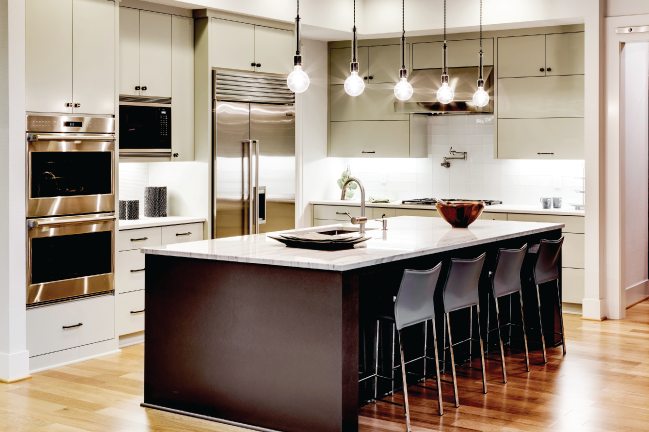
Remodelling
Thinking of remodeling your kitchen? Make sure to look at antiques and salvages first! Look for kitchen fittings, paneling and cabinets that have a history to add a sense of uniqueness to your home. Afterall, they don’t make them like they used to anymore. If you want to trade your old supplies out, do try to trade them out on Freecycle before throwing them to the trash, or you could even donate your unwanted items to charity to give them another life as well. If you’re not too fond of reclaimed materials, there are many other green options available for you too. There are green countertops made of recycled papers to cork flooring and even bamboo flooring. Many of these are environmental friendly so be sure to do a tad bit of research to know what kind of fixtures you’d like in your home that contributes to the environment in a positive way!

